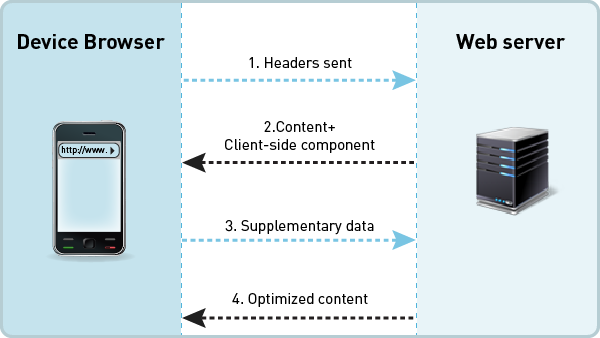Today's well-informed customer has moved beyond the traditional customer journey where decision-making is assumed to be made in a linear way. Shoppers move fluidly between devices, channels, and platforms — often researching on one screen, comparing on another, and completing the purchase elsewhere. Mapping this journey requires a device intelligence solution.
Therefore, a device-aware approach is required from businesses when interacting with potential customers. A core part of this is the ability to track the devices these customers use in order to build a holistic view of the customer journey which is now a multi-device path to purchase.
A cross-device strategy
Modern consumers interact with brands across mobile apps, desktop browsers, smart TVs, voice assistants, wearables, and even connected cars! That's why it's essential to have a consistent presence across multiple screens, meaning it is imperative for businesses to have sites that are adaptive on all devices to unify the shopping experiences. By tracking user behavior across multiple devices, businesses can provide consistent advertising and enhance campaign performances.
Consistency across devices is now expected by customers online. Leading businesses need to use adaptive content, AI personalization, and creative optimization to ensure every interaction feels native to the device being used.
How can you do this:
Make your website lighter and faster
Recent years have seen the rise of the 'attention economy' where the attention span of users is lower than ever before as they navigate through the online world of information overload. Consequently, users have become extremely sensitive to web performance. It is widely reported that reducing site speed by even a second can directly improve conversions. For example, Walmart noted that for every second reduced in page load time, sales increased by 2%
Typical causes of slow load times are tons of images, CSS and JavaScript which effectively kill any chances of mobile conversions. Businesses need to keep these as lightweight as possible. To limit the payload size, you can use server-side device detection to select the right website components that work and look great on the user’s device. Employing server-side detection will ensure that your website loads fast on ALL devices and as result, improve mobile engagement and conversion rates.
How you can optimize:

Harness real-time device intelligence
Using device intelligence not only ensures your site performs well on every device, it can give you a deep understanding of the customer journey at a device level. Device intelligence can provide you with granular device data on user interactions across various channels and devices.
While device intelligence can be effectively used to correctly handle different devices as they visit your website, businesses can go beyond this and actually see the typical online behaviors on certain devices that lead to won and lost customers and optimize their content based on that knowledge. Your website needs to reflect the needs of the user on a specific screen. The result is high-performing and cost-efficient campaigns.
How can you do this:
Bottom line
In an age where customers effortlessly switch between devices, understanding the complete customer journey requires more than traditional analytics. It requires real-time device intelligence that can help businesses deliver faster, more relevant and personalized experiences across all devices.
When brands use adaptive design and performance optimization together, they create a seamless journey across every screen, turning fragmented interactions into connected, converting experiences.



